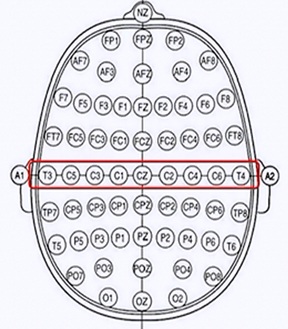Biofeedback for the brain, to address a host of neurological ills.
Lobe Specialization and Functions: from Getting Started with Neurofeedback (2005) by John N. Demos.
Have you ever wondered what the jobs are of the different parts of your brain? Ever wondered how to ‘train your brain’ for better performance or behaviour? Read on…
Frontal lobes- sites: FP1, FP2, FZ, F3, F4, F7, F8
Key Functions: attention, memory, social awareness, character, motivation, planning, prefrontal lobes have connections leading to the amygdala so are involved in emotional regulation. They modulate emotions, and give social awareness, empathy, time management and initiative.
FZ AND FP SITES may have an impact on social behavior and consciousness. FP1 and 2 may help when clients have excessive fear as a result of trauma, anxiety and neglect. Neurofeedback training to the right prefrontal cortex may lead to a reduction in fear, and assist with developing a sense of clam and well being.
Parietal Lobes: PZ, P3, P4
 Want to overcome Anxiety related solutions? … NeuroFeedback has an APP for that…
Want to overcome Anxiety related solutions? … NeuroFeedback has an APP for that…
Call or Text us for an Introductory NeuroFeedback Session in Our Kitsilano, Vancouver, BC Location – and Eliminate Your Anxiety This Year. 604-785-1709 www.no-stress-success.com
Key functions: math, naming objects, complex grammar, spatial awareness
The parietal lobes solve problems that have been conceptualized by the frontal lobes..they are the association cortex. Complex math processings is in the left parietal, but the right parietal is strong in spatial processing so is also involved. The posterior parietal lobe allows us to attend to multiple objects at one time, and to shift attention from one location to another, and perhaps from one sensory modality to another.
Temporal Lobes: T3,T4, T5, T6
Key functions: Left hemisphere: verbal memories, word recognition, reading language, emotion
Right hemisphere: music, facial recognition, social cues, object recognition, and close proximity to the amygdala (emotion) and hippocumus (memory). Long term memory has two braches..sematic and episodic. Semantic memory includes the recall of objects and word understanding. This memory extends form the midtemporal into the hippocampal lobes. Episodic memory involves functional tasks like remembering to pay bills, where you put your glasses or keys. It involves connections into the prefrontal cortex.
In some dyslexia the two main language areas may not work in concert and therefore an important neural link in the insula cortex is not activated.
Occipital Lobes: Sites are OZ, O1, O2
Key functions: visual field, helps to locate objects in the environment, see colors and recognize drawings and correctly identify objects, reading, writing, and spelling depend upon an accurate visual field, some connections extend to the amygdala, so emotional regulation involved. Traumatic memories that accompany visual flashbacks are often processed in the occipital lobes. PTSD is part of a pattern that is a unique connection between the visual cortex and the amygdala. This can also be involved in depression and anxiety.
Sensory and Motor (sensorimotor) Cortex: Sites are C3, C4, CZ. It is the division between the parietal and the frontal lobes and serve as a junction that co ordinates movement, and especially movement guided by sensation.
Key functions: the primary motor cortex: conscious control of all skeletal muscle movements. This cortex runs parallel with the sensory cortex which manages spatial discrimination and the ability to identify where bodily sensations originate.
Damage in the right sensory cortex compromises reasoning/decision making and emotion/feeling and disrupts the processes of basic body signaling. The motor cortex maintains skillful movement and smooth repetitive operations including fluid speaking. Neurofeedback here can assist in stroke, epilepsy, ADHD and disorders of sensory/motor integration. The sensorimotor cortex shares in both physical and mental/emotional processes.
Cingulate Gyrus: Sites: Fpz, FZ, CZ, PZ
Key functions: contributes to mental flexibility, cooperation, attention, helps the brain t shift gears and helps the child to make transitions, helps the mind to let go of problems and concerns, helps the body to stop ritualistic movements and tics, contributes to the brain circuitry that oversees motivation, the social self, and our personality, is closely aligned with the amygdala. It also has a role in orientation in space, eye and senory monitoring services. In ADHD and anxiety the cingulated gyrus sites are involved with emotion/feeling, attention and working memory.
For more information, or to try a 1 hour introductory NeuroFeedback session for only $25 call us at 604-785-1709 www.No-Stress-Success.com in Vancouver BC, Canada.


